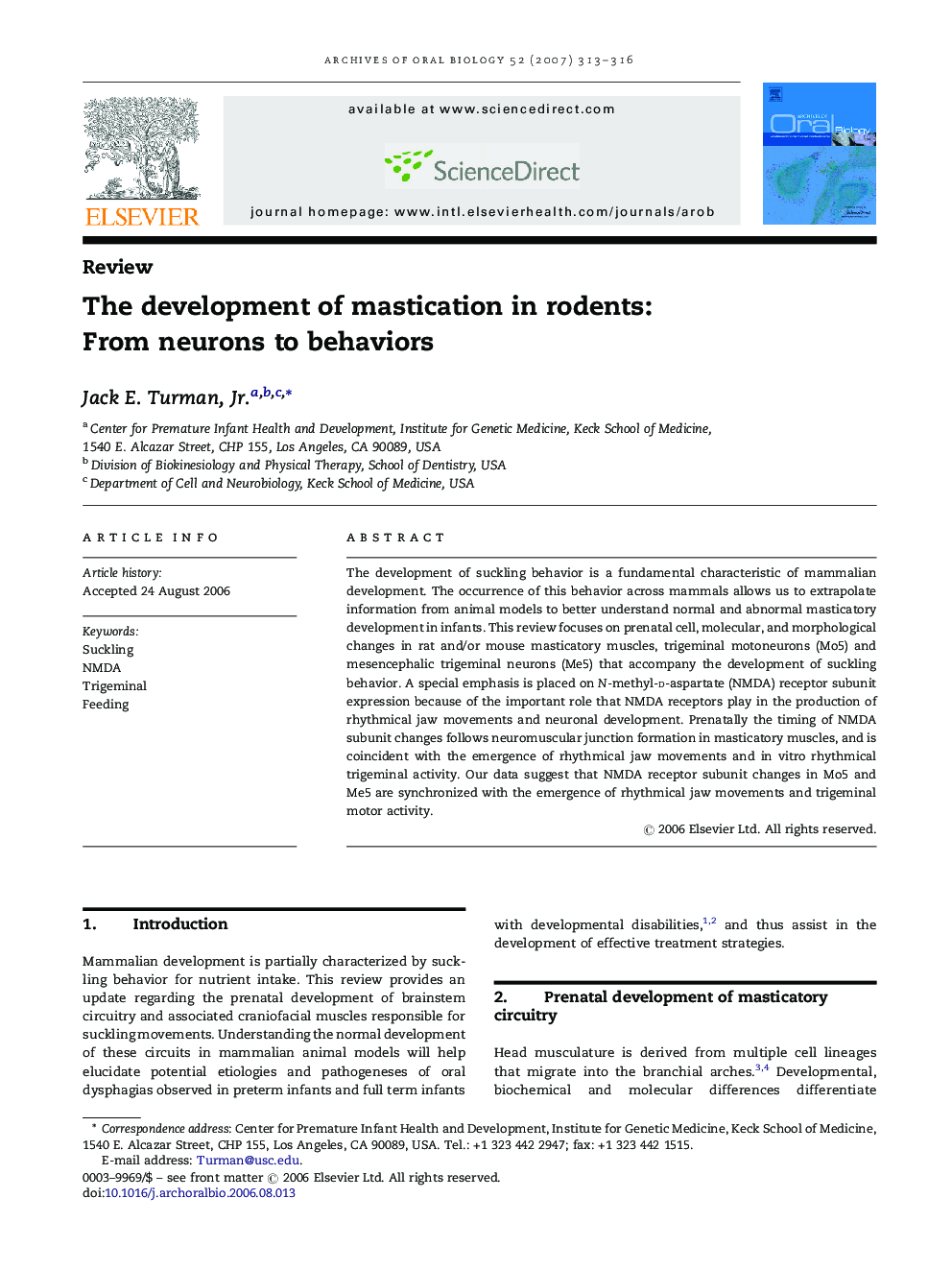| Article ID | Journal | Published Year | Pages | File Type |
|---|---|---|---|---|
| 3121951 | Archives of Oral Biology | 2007 | 4 Pages |
The development of suckling behavior is a fundamental characteristic of mammalian development. The occurrence of this behavior across mammals allows us to extrapolate information from animal models to better understand normal and abnormal masticatory development in infants. This review focuses on prenatal cell, molecular, and morphological changes in rat and/or mouse masticatory muscles, trigeminal motoneurons (Mo5) and mesencephalic trigeminal neurons (Me5) that accompany the development of suckling behavior. A special emphasis is placed on N-methyl-d-aspartate (NMDA) receptor subunit expression because of the important role that NMDA receptors play in the production of rhythmical jaw movements and neuronal development. Prenatally the timing of NMDA subunit changes follows neuromuscular junction formation in masticatory muscles, and is coincident with the emergence of rhythmical jaw movements and in vitro rhythmical trigeminal activity. Our data suggest that NMDA receptor subunit changes in Mo5 and Me5 are synchronized with the emergence of rhythmical jaw movements and trigeminal motor activity.
